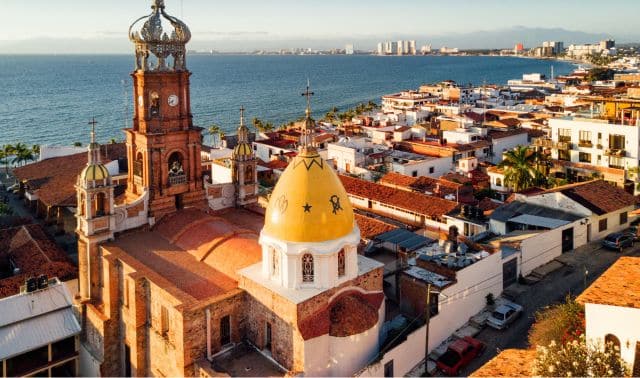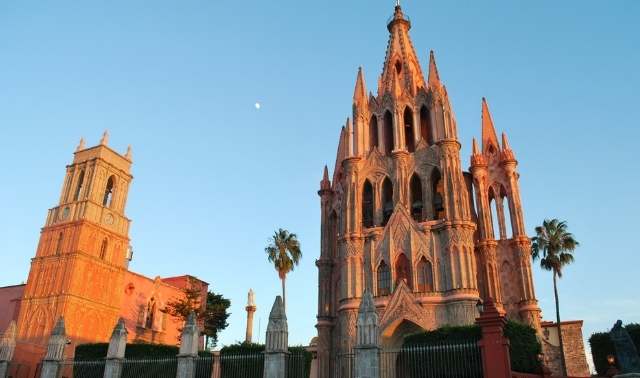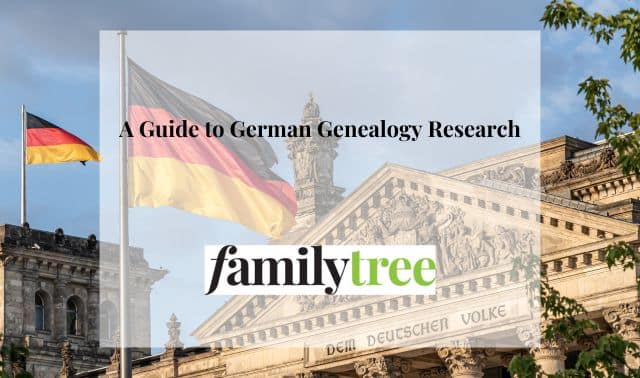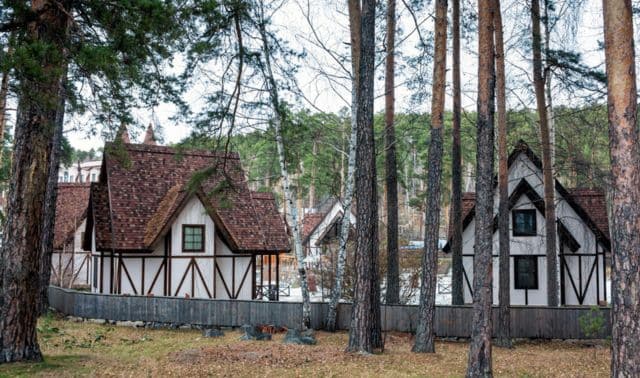Sign up for the Family Tree Newsletter! Plus, you’ll receive our 10 Essential Genealogy Research Forms PDF as a special thank you.
Get Your Free Genealogy Forms
"*" indicates required fields
As you research your ancestors from Spanish-speaking countries in civil registry records, you may come across records that you cannot completely understand due to the language barrier. You may be tempted to skim over any text in Spanish and focus just on the English; however, you could potentially miss out on key information about your ancestors by doing so.
Fortunately, there are tools and strategies that can help you identify commonly used Spanish words in civil registry records. Below are several to help you uncover the information you are looking for.
Understanding Spanish Language Civil Records
Civil registry records in Hispanic countries started in the early 1800’s, with Spain being the first to begin in 1837. The most common civil registry record types found in Spanish-speaking countries are: births or nacimientos, marriages or matrimonios, and deaths or defunciones. Other related records that contain important genealogical information are: delayed birth records or inscripciones tardías de nacimiento, marriage investigation records or expedientes matrimoniales, and burial permits or permisos de entierro.
The chart below shows you the terms that are commonly found in these record types. These records give you information on the place and date of the event, as well as the name of the parties involved, their sex, origin, age, and profession. They also mention the witnesses to the respective events, who among Hispanic families are oftentimes biologically related.
| Common Spanish Term | English Translation |
| Comparecer/Hacerse presente | Appear |
| Juez | Judge |
| Denunciante/Exponente/Declarante | Informant |
| Declarar | Declare |
| Acta/Partida | Document/Record |
| Pueblo | Town |
| Ciudad | City |
| Municipio | Municipality |
| Distrito | District |
| Provincia | Province |
| Estado | State |
| Departamento | Department |
| Región | Region |
| País | Country |
| Día | Day |
| Mes | Month |
| Año | Year |
| Hoy | Today |
| Ayer | Yesterday |
| Semana | Week |
| Hora | Hour/Time |
| Fecha | Date |
| Corriente | Current |
| Inscribir | To register |
| Sexo masculino | Male |
| Sexo femenino | Female |
| Nombre | Name |
| Apellido | Last name/Surname |
| Edad | Age |
| Nacionalidad/Origen | Nationality/Birth Country/Origin |
| Dirección/Domicilio/Residencia | Address/Residence/Dwelling |
| Profesión/Ocupación | Profession/Occupation |
| Testigos | Witnesses |
| Firma | Signature |
Birth Records or Nacimientos
While researching birth records, or nacimientos, you may come across many unfamiliar words again and again. Fortunately, these words are fairly easy to decode. You can find a comprehensive list of Spanish genealogical terms on the FamilySearch website. Below I’ve also included a chart of words that you are likely to stumble upon.
| Common Spanish Term | English Translation |
| Nació/Nacido | He/She was born |
| Criatura/Niño(a) | Child |
| Párvulo | Infant |
| Hijo de | Son of |
| Hija de | Daughter of |
| Hijo(a) legítimo(a) | Legitimate son/daughter |
| Hijo(a) natural | Illegitimate son/daugther |
| Padre | Father |
| Padres | Parents |
| Madre | Mother |
| Padres desconocidos | Unknown parents |
| Abuelos | Grandparents |
| Paternos/Maternos | Paternal/Maternal |
| Nietos | Grandchildren |
The first term on the list, nació, indicates that the record belongs to a birth event. These events were recorded soon after the birth or in the following days or weeks. Along with information on the criatura or child, this record type reveals the names of the parents, which usually follow the terms hijo or hija de. The last terms, from hijo legítimo to abuelos, will disclose relationships or the lack thereof, for example in the case of registered children with unknown parents.
Pictured below is the birth record of my maternal grandfather, Mario Angel Farías, who was born in the city of Concepción del Uruguay, Entre Ríos, Argentina, on the 27th of the corriente or current, which referred to the current month in which the record was created. Thus, his birthdate took place on 27 May 1925.
He was hijo legítimo or legitimate son of the informant or declarante, Angel Rosario Farías, and Matilde Caffa. His abuelos paternos or paternal grandparents were Sixto Farías and Narcisa Rodríguez. And his abuelos maternos or maternal grandparents were Bernardo G. Caffa and Sebastiana González.
Delayed Birth Records or Inscripciones Tardías de Nacimiento
Delayed births or inscripciones tardías de nacimiento are birth records that occurred a long time ago but that for some reason were not registered in a timely manner. These are frequently found in complementary records books in a civil registry office. For example, in some South American countries, it was common for families that lived far away from the cities to register their children later in life, or all together once they visited a city civil registry office. Hence, these births were registered oftentimes months and even years after the actual birthdate.
As such, they contain the same information as birth records or nacimientos, but they usually mention the act to proceder a registrar or proceed to register the birth based on the testimonio or witness of someone who was present when the said birth took place. These witnesses could have been relatives, friends, or neighbors. These relationships could be disclosed at the beginning or end of their statement. It is also common for these statements to be accompanied by a certificado or certificate issued by the doctor that delivered the child or assisted in the birth event.
Marriage Investigation Records or Expedientes Matrimoniales
As part of the civil marriage process, the bride and groom provide documents to the civil office to prove their suitability to get married, such as their birth certificates, marriage, divorce, and death of previous spouses records. You should review these documents because they might contain other names and relationships you did not know about. Through these, the judge of the civil registry determines the soltería or singleness of the contrayentes or future spouses.
In the case of minors or menores de edad, the minor’s parents signed a parental consent or consentimiento allowing their child to get married. Other documents also include witnesses’ declarations that confirm that they conocen or know the novia and novio, and that they are legally free and able to enter into the marriage union. Witnesses could have also been questioned in person to confirm their knowledge about the couple to ensure there was no impediment for the marriage to take place.
The witnesses usually shared last names with the novios, which could indicate that they were closely related to them. If not, they might have been close friends or neighbors, which could be further investigated by researching other record types such as censuses for the area in that time period.
| Common Spanish Term | English Translation |
| Contrayentes/Futuros esposos | Contracting parties/Future spouses |
| Novios | Betrothed |
| Novia y novio | Bride and groom |
| Libertad/Soltería | Singleness |
| Impedimento | Impediment |
| Consentimiento paterno | Parental consent |
| Menor de edad | Minor |
| Mayor de edad | Of legal age/Adult |
| Estado civil | Marital status |
| Interrogación | Inquiry/Questioning |
| Conocer | Know |
Marriage records or Matrimonios
Once the expediente matrimonial or marriage investigation record was satisfactorily completed, the marriage event took place shortly. Matrimonios records identify the event by using words such as desposarse, contraer matrimonio, or casarse, all of which translate as getting married. After identifying the names of the groom and bride, you should continue scanning the document to find the name of their parents and their origin, as explained for nacimientos. If no names are written, it is possible the information is unknown. Next, the marriage record usually specifies if there was an impediment for the marriage to occur by reading that no había impedimento, or explaining the resolution if there was, which would have been included in the marriage investigation record.
Furthermore, terms such as soltera and soltero indicate the marital status of the bride and groom, but can also shed light on previous relationships if they claimed to be viudos or divorciados. Lastly, the record finishes pronouncing the couple lawfully wed, or unidos en legítimo matrimonio, thus becoming cónyuges or spouses, marido and mujer.
Below is an example of a marriage record or acta de matrimonio that took place in Perú.Máximo Trinidad Sifuentes, who was son of Agapito Trinidad and Melania Sifuentes, married Lurgia Villanueva Mendoza on 27 September 1976, in Pozuzo, Oxapampa, Pasco, Perú. Lurgia was the daughter of Baldomero Villanueva and Estefanía Mendoza. They were all Peruvians. Máximo was 29 years old, and Lurgia was 19 years old. Knowing this information and the date of marriage can help you calculate their approximated birthdate. The document also provides information on their birthplaces, as well as the names and ages of the witnesses who signed the acta. The couple was then pronounced legalmente casados or lawfully wed.
Death Records or Defunciones
In addition to sharing most of the common Spanish terms as nacimientos, matrimonios, and other related records, defunciones records reveal the causa de muerte or cause of death. This might be useful information for your living relatives concerned about their genetic background and family health history.
Moreover, these documents generally list an informant or denunciante, who possibly have a close relationship to the deceased or difunto, such as hermano or brother, cuñado or brother-in-law, yerno or son-in-law, and suegro or father-in-law among others. It could also determine if they were vecinos or neighbors, amigos or friends, conocidos or aqcuaintances instead.
| Common Spanish Term | English Translation |
| Defunción/Muerte/Fallecimiento | Death |
| Difunto/Fallecido | Dead person/Deceased |
| Mortinato | Stillborn |
| NN/N.N./Ningún nombre | No name |
| Causa de muerte | Cause of death |
| Hermano/Hermana | Brother/Sister |
| Hermanos | Siblings |
| Cuñado/Cuñada | Brother-in-law/Sister-in-law |
| Yerno | Son-in-law |
| Nuera | Daughter-in-law |
| Suegro/Suegra | Father-in-law/Mother-in-law |
| Tío/Tía | Uncle/Aunt |
| Sobrino/Sobrina | Nephew/Niece |
| Vecino | Neighbor |
| Amigo | Friend |
| Conocido | Acquaintance |
In the case of mortinatos or stillborn children, they could have been registered in birth or in death records. Either way, depending on the laws of each country, they do not generally have the legal right to receive a name, so they are listed as N.N. or as infante or párvulo followed by the last name of their parents if known.
An example of a death record from México can be found below. Julia Luarte falleció passed away in Obayos, Escobedo, Coahuila de Zaragoza, México, on 22 April 1926. The names of her parents were unknown. However, the informant, Víctor Treviño, claimed that Julia was from Aguas Calientes.
The relationship between the deceased and the informant is also unknown, so looking for both in other record types such as birth and marriages could help determine if they were relatives. Even though neither Julia’s age nor parents were listed, knowing her death date and origin could help narrow down the search for other events in her life, such as her birth date.
Burial Permits or Permisos de Entierro
After the defunción or death registration of a person, the civil registry issues a burial permit authorizing the cemetery to bury the body. Without it, the cemetery will not proceed with the burial. These records are known as pases de sepultación, autorización de sepultación, licencias de inhumación, and permisos de entierro, depending on the country. Besides having information about the death of the person, these records provide information about the cemetery in which the body is buried. Knowing this information could help you get in contact with the cemetery to learn what other records they might have available in their archives about your ancestor.
| Common Spanish Term | English Translation |
| Cementerio | Cemetery |
| Entierro/Sepultación/Inhumación | Burial |
| Cadáver/Cuerpo/Restos | Body/Remains |
| Autorización/Pase/Licencia/Permiso | Permit |
In conclusion, although nacimientos, matrimonios, defunciones and their related records share common Spanish terms, it can be helpful to familiarize yourself with the specific terms used for each type. Consequently, you will be able to identify Spanish keywords and the genealogical information that follows them without the need of knowing the language.
Related Reads












